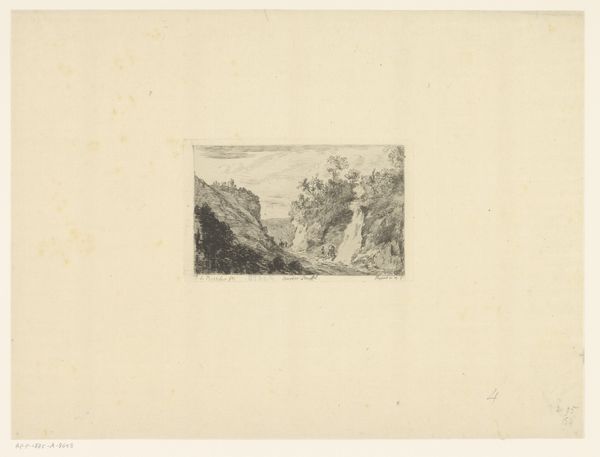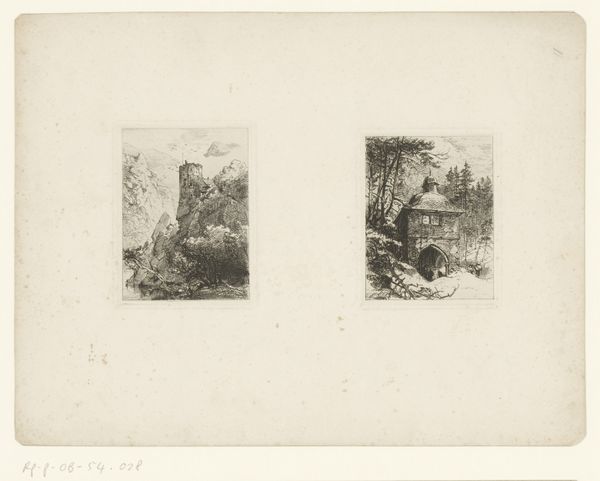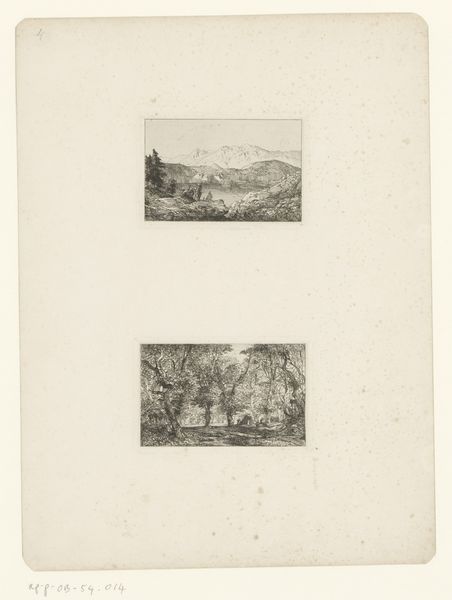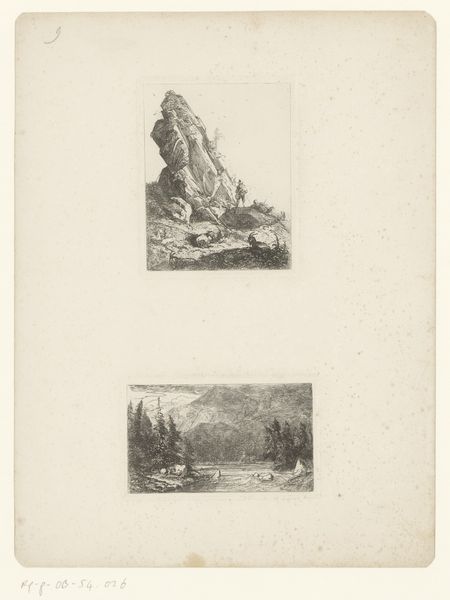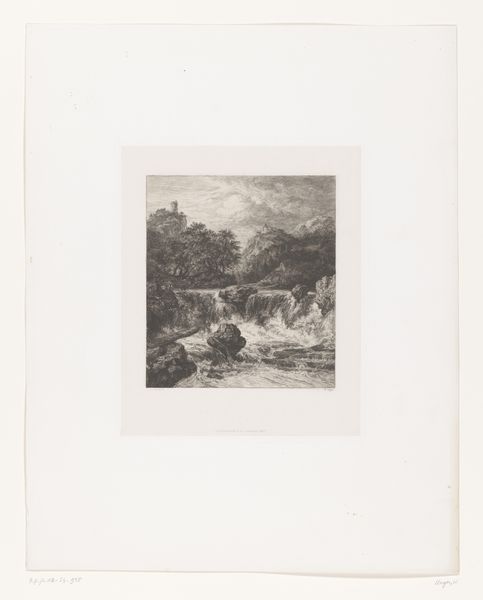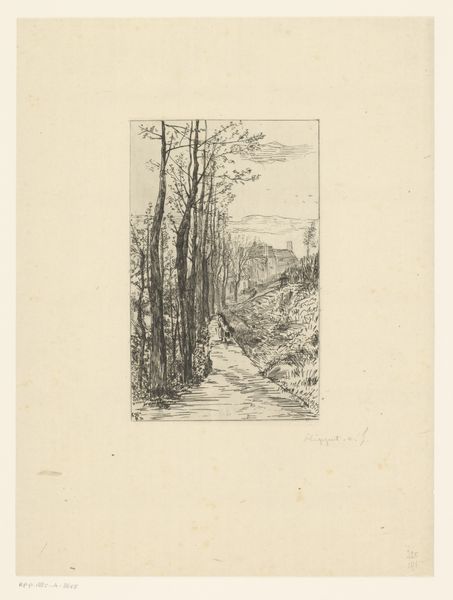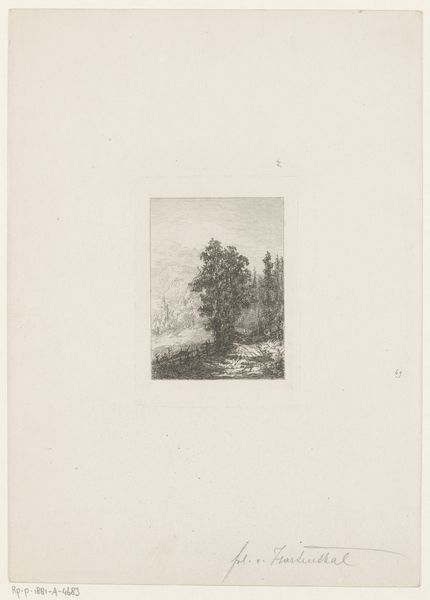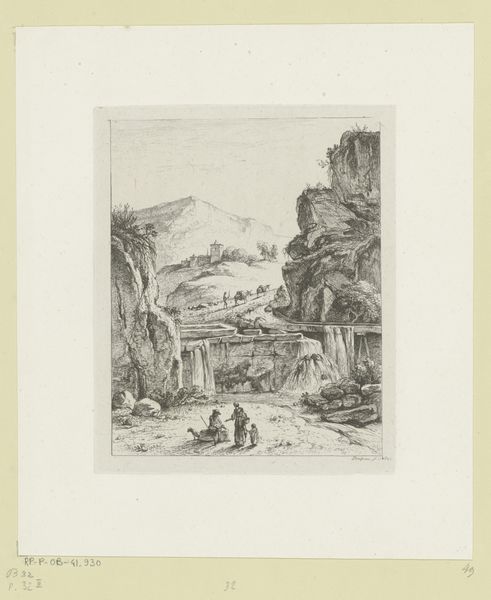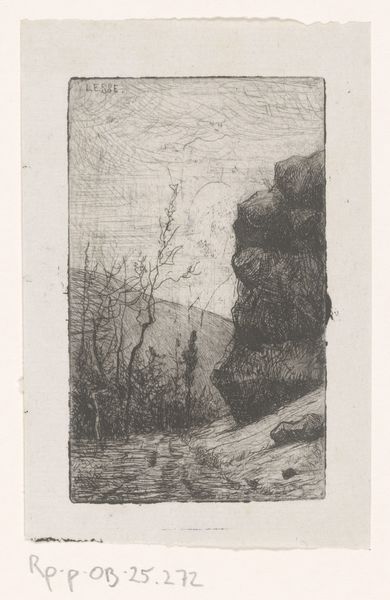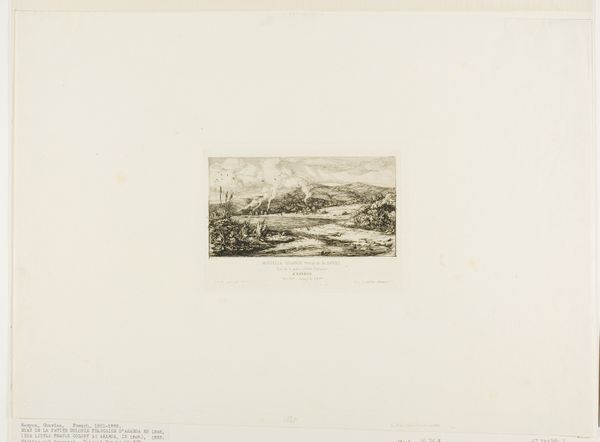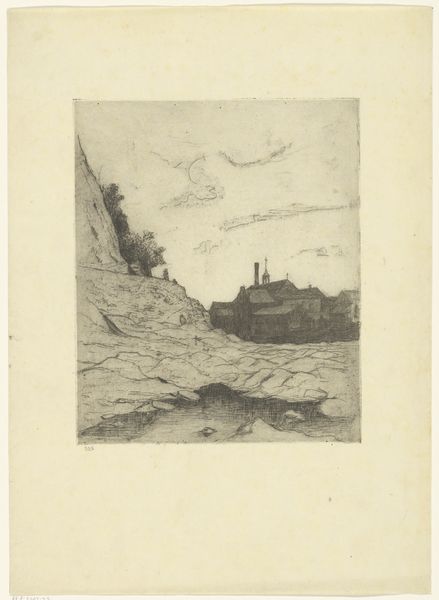
print, engraving
# print
#
landscape
#
romanticism
#
mountain
#
engraving
Dimensions: height 322 mm, width 244 mm, height 98 mm, width 103 mm, height 111 mm, width 114 mm
Copyright: Rijks Museum: Open Domain
Curator: Here we have "Twee voorstellingen," or "Two Scenes," an engraving created by Johann Caspar Nepomuk Scheuren in 1842. The artwork resides here at the Rijksmuseum and is a striking example of Romantic landscape art. What's your immediate impression, Editor? Editor: Two tiny worlds clinging to the paper! It feels like I’m peering into someone's daydreams, or maybe forgotten memories struggling to resurface. I love the delicate intensity, the contrast between those tranquil waters above and the raw, craggy scene below. It's moody, evocative. Curator: Indeed. Scheuren, a product of the Romantic era, certainly imbues his scenes with a palpable sense of drama. These engravings were likely created and circulated within a burgeoning art market that valued accessibility. Prints democratized art consumption, offering multiple copies for eager collectors to enjoy the scenic and sublime. Editor: Sublimity bottled, eh? I feel a melancholic echo in those stark contrasts. Is it just me, or is there almost a feeling of danger lurking in that bottom frame with those foreboding dark rocks and lonely path? Makes you wonder where it might lead! It is an invitation and a warning. Curator: The sublime often touches on that dual sense of awe and terror, reflecting the human confrontation with nature's immense power. This work is very much of its time. During this period, landscape art flourished, frequently utilized to convey national identity and historical narratives, which helped bind a nation to shared values, cultural touchstones, and political aims. Editor: So landscapes used as nationalist stagecraft. That’s a smart reading. Yet on another note, thinking purely as an artist…the incredible detail achieved with simple engraving… it's inspiring! You can feel the air shift from cool river breeze to that dry mountain wind. The artist captures feeling, and almost smell with lines. Curator: A skillful artist utilizes established representational forms in ways that affirm, challenge, or reshape popular opinion. By engaging with Scheuren's technical skill, one may discover how artistic processes often inform historical or political perspectives. Editor: That feels like it brings us full circle in considering it—looking at the how informing what we believe and why. I will never think of these landscapes as ‘just scenes’ again. Curator: Then our work here is done. Looking deeply at technique can definitely reveal the social and political undercurrents.
Comments
No comments
Be the first to comment and join the conversation on the ultimate creative platform.
